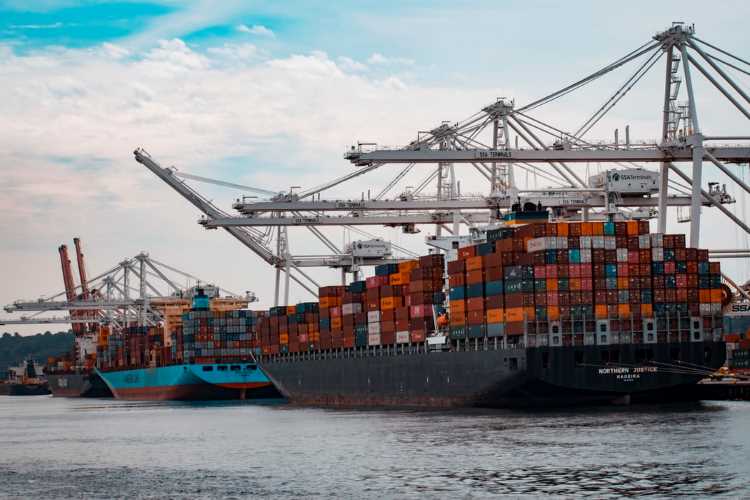
The India-UK trade agreement: The debilitating blow of the Covid-19 pandemic has pushed the Indian economy into a contraction phase. IMF had predicted a rebound for Indian economy with a growth rate of 8.8% in 2021. But, the second wave of Covid-19 seems to have dented the prospects of a strong recovery. The economy was already slowing down when the pandemic hit the country. The government is looking to achieve a sustainable recovery through self-reliance as envisaged in the Atmanirbhar Bharat initiative.
Besides boosting the domestic production under Atmanirbhar Bharat plan, it is also looking at opportunities to export through Free Trade Agreements with developed countries and emerging markets. In this context, the India-UK trade pact is one of the most important agreements. The deal envisages doubling of bilateral trade between the two countries by 2030. The nations have also started working towards a comprehensive free-trade agreement, for which discussions are expected to commence in the autumn.
READ I Trade negotiations: How can India strike a strategic balance
The new India-UK trade pact
This new trade deal sets the stage for an exponential growth in bilateral trade and investment between India and the UK. With the share of 2.7% in India’s global exports (2019), the UK is among India’s top 10 trade partners. The overall India-UK trade has reached £24 billion in 2019, an increase of 10% compared with the previous year. As an emerging economy, India has tremendous opportunities to increase exports to the UK. In the merchandise trade, India is a net exporter to the UK in the last 15 years. (Figure 1)

There are also untapped prospects for the UK to raise exports to India which has a young and growing consumer base. The structure of the bilateral trade shows that India’s exports to the UK are mainly consumer goods, textiles, clothing, capital goods, intermediate goods and chemicals, while imports are stone and glass, metals, raw materials, intermediate goods and capital goods. On the investment front, the UK has been one of the top investors in India among the G20 countries. The robust investment partnership between the countries has the potential to create new joint-avenues along with the India-UK trade pact.
The India-UK trade is built on a strong bilateral relationship. This partnership has been upgraded over the years with a number of bilateral visits and exchanges at the highest levels. The India-UK Joint Economic Trade Committee (JETCO) meeting on January 11, 2018 focused on the recommendations contained in the Joint Trade Review and identified opportunities for expanding India-UK trade.
During the visit of Prime Minister Narendra Modi in April 2018, the countries signed several MoUs and agreements (Green Growth Equity Fund; UK-India dialogue on investment; sector targeting roadmap; UK-India multilateral trade dialogue; fast track mechanism and FinTech dialogue) on various aspects to boost India-UK trade and economic engagement.
READ I India at 75: A vision for equal access to credit for MSMEs
India, UK need to identify priority sectors
Under JETCO meeting in July 2019, the countries agreed on the five priority sectors for India-UK trade — life sciences, information communications technology, food and drinks, chemicals, and services — to address non-tariff barriers to be addressed in an enhanced free trade agreement. With special focus on Covid-19, the promotion of international collaborations in potential sectors are critical. During the Covid-19 pandemic, India and the UK have jointly put efforts for a better healthcare system by setting up a joint venture between Oxford University, AstraZeneca and the Serum Institute of India on the vaccine.
The countries have chances to collaborate via sharing of knowledge and technology and both will benefit from such engagements. However, to explore further opportunities, both economies must look at some of the industries that present high bilateral trade prospects. Given the past experiences of rising deficits with FTAs partners, India must shift strategy while going ahead. FTA negotiation strategies must be aligned with the Atmanirbhar Bharat strategy to promote India’s champion sectors.
India should focus on sectors with higher complementarities and potential. It should target the void created by Brexit in the UK economy. India has the opportunity to secure a market in the UK by collaborating in sectors such as food and drinks, pharmaceuticals, digital advanced manufacturing, education, health, environment, movement of natural persons, and large investment flows.
After the Covid-19 pandemic, the world economy on a recovery path. The society needs to rebalance as soon as possible and the governments still look unprepared for the new economic realities. Both the UK and India need to engage global markets through FTAs. Both the countries will benefit from close trade ties in the near future.
(Dr Badri Narayanan Gopalakrishnan is founder and director of Infinite Sum Modelling. Suvayan Neogi is Senior Research Fellow, Centre for WTO Studies, New Delhi. Dr Javeria Maryam is Associate, Public Policy and Research, at Shangrila Corporate Services, Mumbai.)
Dr Badri Narayanan Gopalakrishnan is Fellow, NITI Aayog. Views expressed are personal.

